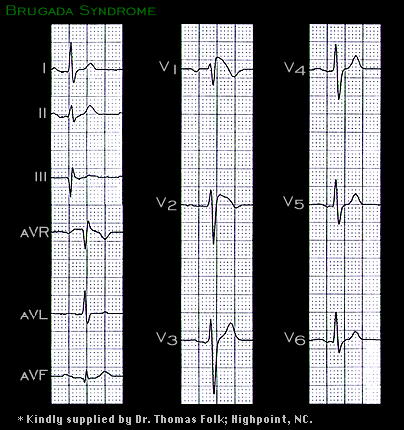
The final topic of this chapter is the Brugada Syndrome. Like the congenital long QT syndromes, it is genetically mediated, presents with characteristic ECG changes, and is associated with syncope, polymorphic ventricular tachycardia and ventricular fibrillation. It is a not uncommon cause of sudden death in younger individuals with structurally normal hearts. The syndrome was described by the Brugada brothers in 1992 (J.Am. Coll.Cardiol, 20:1391, 1992) The genetic abnormality is in genes that encode for the sodium channel. The typical diagnostic ECG pattern is shown in this ECG from a 35 year old male with a history of syncope and short bursts of non–sustained polymorphic ventricular tachycardia. This pattern includes incomplete right bundle branch block and “coved” elevation of the ST segment in leads V1, V2 and often V3. These ECG findings are often intermittent and may be brought out by sodium channel blocking drugs.
